#Virgil Exner
Explore tagged Tumblr posts
Text






Bugatti T101C Roadster, 1966, by Ghia. Designed by Virgil Exner as one of his "revival series" and built on the last remaining Type 101 chassis with its supercharged straight 8 DOHC engine. The Roadster was built by Ghia and given to Exner as payment for his work on the Duesenberg revival cars that were also built by Ghia
#Bugatti#Bugatti T101C#Bugatti T101C Roadster#1966#Ghia#Virgil Exner#one off#supercharged#straight 8#DOHC#coachbuilt#last of the line#1960s
513 notes
·
View notes
Text
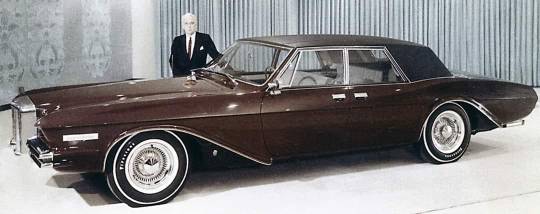
Duesenberg Model D Rendering Ghia (Virgil Exner) 1966. - source Roland Richter.
64 notes
·
View notes
Text
Virgil Exner Design Highlights
Background Virgil Exner was an influential American automotive designer known for his work in the mid-20th century. He played a significant role in shaping the design of cars during the 1950s and 1960s. Exner worked for Chrysler Corporation, where he became the Vice President of Styling. One of his notable contributions was the “Forward Look” design philosophy introduced in the mid-1950s. This…
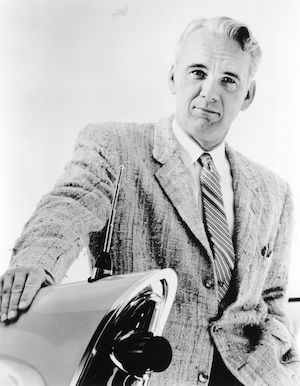
View On WordPress
0 notes
Text
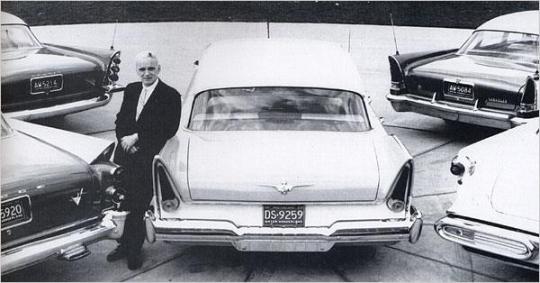
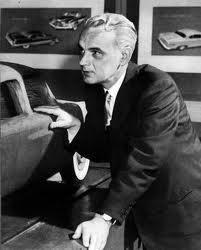
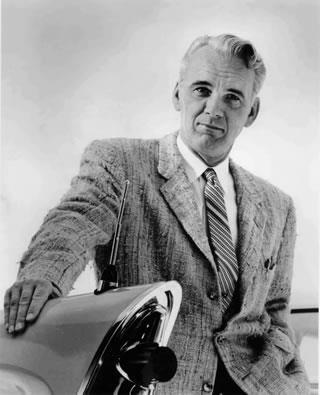
Virgil Max "Ex" Exner, Sr
Virgil Max "Ex" Exner, Sr. was an automobile designer for numerous American companies, notably Chrysler and Studebaker. He is known for his "Forward Look" design on the 1955-1963 Chrysler products and his fondness of fins on cars for both aesthetic and aerodynamic reasons.
26 notes
·
View notes
Text
Earthquakes are rough. It's a betrayal of the landlord contract we all signed with the planet when we moved in. On this issue, the language is clear: the ground is not supposed to move, unless we hit it with a shovel, or a really big hammer, or we split some atoms underneath it. Then the ground does move, and a building falls over.
Now, where I live, we don't really get earthquakes. We're too far from a fault line, so it only ever happens when the big oil company folks trebuchet six tons of plastic waste into an aquifer that they think nobody's using. It would be nice if those dinosaur-squeezing greedheads would let us know that they're doing it beforehand, because when my garage started shaking last night, my prized novelty bobblehead of Virgil Exner fell off the shelf, onto the ground, and became mildly scratched.
Sure, you could blame me for not expecting an earthquake in my house which had never before received an earthquake. That's certainly what the city did when I called them to complain, thinking it was something mundane like a big truck driving by, or a sewer explosion. I'm not one to accept blame of any kind, however, and I soon formed a posse with several other like-minded individuals from around the neighbourhood. Rice-A-Roni Stan from down the block was particularly upset, having had an entire NBA Jam arcade cabinet fall on him during the seismic event, requiring himself to be freed by his small, but heroic, wiener dog.
Here's the thing about modern politics: despite all the foofaraw about "decorum" and "tact," if you walk into City Hall carry pitchforks and torches, they'll find someone else to blame. And sometimes, if you're lucky, they'll even pass the blame onto the right person. In our case, we quickly descended upon the oil company offices. Oil company people are savvy, having spent their entire lives bribing reactionary assholes into giving them a wide leeway. So was it with me: the front desk receptionist decided to placate the leader (me) by presenting me with a scale model of one of their service vans. The little doors even opened and closed.
Sure, if you ask the newspaper, the remaining splinter groups left in the absence of my now-defanged leadership committed a mass murder, slaughtering executives like cattle, but I had nothing to do with it. I was too busy playing with the little model van, making realistic (but exaggerated, I must admit) engine noises with my mouth. Vroom, vroom.
187 notes
·
View notes
Text


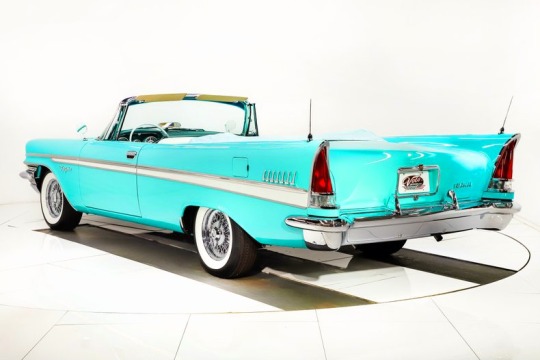
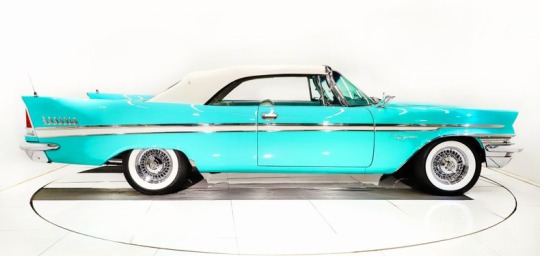
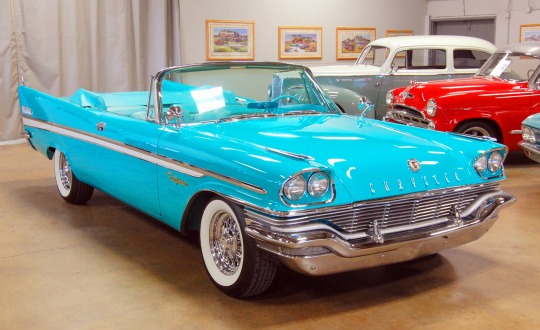



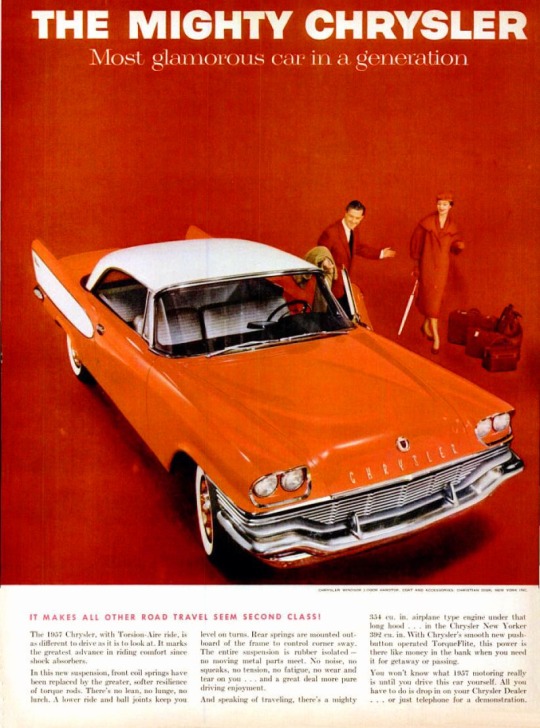

🇺🇲 Step into the glamour of the 1950s with the iconic Chrysler New Yorker of 1957—a symbol of luxury, style, and innovation in the automotive world!
👉 The year 1957 marked a pinnacle moment for Chrysler as it unveiled the stunning New Yorker model, captivating enthusiasts with its bold design and advanced features. The 1957 model year Chrysler cars were redesigned with Virgil Exner's "Forward Look" at the cost of $300 million when Chrysler took on a loan in 1954 from Prudential Insurance to pay for expansion and updated car designs.
🚘 As one of the flagship models in Chrysler's lineup, the New Yorker exuded elegance and sophistication, setting new standards for the automotive industry. Boasting a sleek and aerodynamic body, the 1957 New Yorker captivated onlookers with its distinctive grille, chrome accents, and sleek lines that epitomized the spirit of the era's automotive design. Inside, passengers were treated to lavish comfort and opulent amenities, making every journey a luxurious experience.
🛞 Under the hood, the New Yorker showcased Chrysler's commitment to performance and innovation. Equipped with powerful V8 engines and advanced engineering, the 1957 model delivered a smooth and exhilarating driving experience, earning accolades for its exceptional performance on the road.
👑 Beyond its stylish exterior and impressive performance, the 1957 Chrysler New Yorker represented a symbol of status and prestige. As a favorite among discerning drivers and automotive enthusiasts, it left an indelible mark on the automotive landscape, solidifying its place in history as a timeless classic.
#brits and yanks on wheels#retro cars#transatlantic torque#vehicle#cars#old cars#brands#companies#automobile#american cars#made in usa#usa#chrysler#chrysler new yorker#new yorker#1950s cars#old car#cool cars#classic cars#luxury cars#muscle car#detroit#michigan#sedan#design#v8 engine#firepower#chrysler corporation#flagship model#aerodynamics
33 notes
·
View notes
Text












1960 Chrysler New Yorker 2 door hardtop
Probably my favourite large car ever. I'm not always a fan of Virgil Exner's work, but to me he got it all together for this one, looks right from every angle, and the interior, especially the dash, is simply spectacular. The "gumball" instrument cluster is stunning, no pictures do it justice, it gives off an unearthly glow. This particular car spared us (pun intended) the fake spare tire trunk lid feature, to reveal the beautiful detail on the trunk lid. The lack of a lot of extraneous chrome trim on the sides, leave you to follow the long flowing lines. The taillights harken back to the "Banana" taillights on the mid fifties Packards. This is one year where I'd pick the New Yorker over even the 300, simply because it just looks so much better. The wagon model was just as spectacular, also being a hardtop model.
Currently up for auction on Hemmings
6 notes
·
View notes
Text
Here's the 1954 Plymouth Belmont Concept.
(See if you can spot the antenna.)
The Belmont was the first plastic-bodied (reinforced fiberglass) Chrysler 'idea car', an experiment in new materials and design.
It had a 150-horsepower, 241-cubic inch, 3.9 liter, V8.
It was made for the 1954 Chicago Auto Show by Briggs Manufacturing and designed in the Advanced Styling Studio, under the supervision of head stylist Virgil Exner.
❤️🚘❤️🚘❤️🚘❤️🚘❤️🚘❤️🚘❤️🚘❤️🚘❤️




3 notes
·
View notes
Text
Concept Cars; How Car Manufacturers Flex Their Imaginations
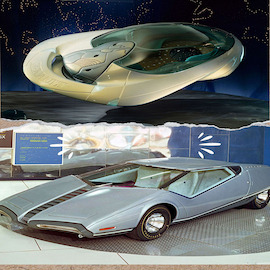
Since at least the 1930s, concept cars of some form have existed. Most are promptly forgotten as soon as a new group appears, but many are remembered by the public for years. Car concepts could almost entirely remain behind closed doors, or they could be used to promote the brand at a global auto show, or it could be something else entirely.
Concept Cars, The 1940 Aston Martin Atom
Originally equipped with a 2.0-liter overhead-cam engine, the Atom was a compact and strikingly designed sedan. However, in 1944, it was replaced by a pushrod engine with a slightly bigger capacity. It must have impressed David Brown (1904-1993), who drove it just before he decided to purchase the business, but a production version was never made.
Concept Cars, The 1955 Chrysler Falcon
The Falcon, a fast two-seat roadster with a 4.5-liter Chrysler Hemi V8 engine, was principally designed by Virgil Exner (1909–1973) and constructed by Ghia. It may have been a rival for both the first-generation Ford Thunderbird and the original Chevrolet Corvette, but Chrysler chose not to proceed with its release. It was unveiled two years after the first Chevrolet Corvette.
The 1968 Alfa Romeo Carabo
When Marcello Gandini created the scissor doors and low wedge shape for the mid-engined Carabo, he must have been staring straight ahead into the future. The world may not have been prepared for anything like this in the 1960s, but Alfa Romeo prevented it from progressing past the concept stage. The Carabo, however, is very similar to another vehicle that Gandini created. In contrast to the previous concept, the Lamborghini Countach went on sale in 1974. READ ALSO: Xiaomi SU7 Ultra Vehicle: Redefining Speed
The 1970 Mazda RX-500
The RX-500 initially appeared to have been created for similar purposes as the Alfa Romeo Carabo. It had a mid-mounted engine (in this instance a twin-rotor), butterfly swing doors, gullwing engine covers, and a wedge shape—albeit not nearly as severe as the Carabo's. All of this shouted "supercar!" but the RX-500 was actually designed to highlight Mazda's safety studies. It included a row of lights at the back, among other things, to let oncoming vehicles know if the vehicle was closing down, accelerating, or maintaining speed.
Concept Cars, Nissan 126X
The 126X, another wedge-shaped idea from 1970 (a lot of that kind of stuff was going on at the time), shared the Mazda RX-500's changeable rear lights. It had a slightly less supercar-like form than the Alfa Carabo or Mazda, but it was still somewhat strange. Nissan outperformed the other manufacturers in one area: the roof, windshield, and front body panels were all part of a canopy that opened from the front to provide access to the cabin.
Concept Cars, The 1976 Alfa Romeo New York Taxi
Despite being only four meters (157 inches) long, Italdesign's solution to a challenge set by the New York Museum of Modern Art was able to accommodate five people and had room underneath the seats for folding wheelchairs. Sliding doors on both sides added to the practicality, which was rather unique for 1976. You don't now link Alfa Romeo with New York taxis because the project was abandoned after the car was constructed. Shame, because it's a fascinating idea.
Concept Cars, 1978, Lancia Sibilo
The Megagamma and the Sibilio are only related since they both wore Lancia badges and attended the 1978 Turin Motor Show. They were as dissimilar from one another as chalk and China, otherwise. In essence, the Bertone-designed Sibilo was an even longer and more bizarre-looking Stratos. A 2.4-liter Ferrari V6 engine powered both the idea and the final vehicle.
The 1986 Audi Sport Quattr RS 002
The RS 002 was never meant to be merely a theoretical idea. This mid-engined coupe was one of several vehicles constructed for the Group S international motorsport regulations, which were set to replace Group B in 1987. It used the same mechanics as the Quattro rally cars. Group S was dropped in favor of the more production-based Group A after a string of catastrophic crashes. Before the car participated in a single race, the project was canceled because the RS 002 could not have been produced in sufficient quantities to qualify.
The 1992 Renault Reinastella
The Reinastella, a purely fictional vehicle that was reportedly part of the company's lineup in the 2328 model year, was on display at Disneyland Paris. It was named after a real Renault that was temporarily manufactured about 1930. Since it's hard to choose the right tense in this situation, we'll assume we're talking from the middle of the 24th century and say that the Reinastella could fly up to 186 mph and fly 15 cm (6 in) over the road in town and 150 meters (492 ft) above it in the country. A prototype appears to have absorbed the remains of its two occupants when it crashed during desert testing. Renault employed a redesigned construction that was incompatible with animals for production models.
Concept Cars, 1999, Bugatti 18/3 Chiron
The 18/3 Chiron was first produced when Volkswagen first acquired Bugatti. A 6.3-liter, 555-bhp engine with 18 cylinders grouped in three banks—thus the 18/3 part of the car's name—powered the three designs that were created around the same time. The remainder alludes to Louis Chiron (1899–1979), a Monegasque driver who competed in a number of vehicle brands but is arguably best known for his exploits in Bugattis. Bugatti's hypercar, which debuted in 2016, was given the Chiron name.
Concept Cars, 2006 Saab Aero X
Saab claims that the company's background in aircraft design served as some inspiration for the Aero X. This was partially demonstrated by the need to raise the cockpit canopy in order to allow passengers to enter and exit, which may be troublesome if you were unlucky enough to land rubber side up. It was claimed that a bioethanol-fueled twin-turbo engine could generate 400 horsepower, and the style elements suggested a future design language. Unfortunately, this was not very successful, and Saab was discontinued less than ten years after the Aero X was introduced.
2010 Citroen Metropolis
The Metropolis, an extremely large sedan that was especially popular in China, was as wide as a Maybach and longer as an Audi A8L. Power was provided by a 2.0-liter V6 engine and an electric motor as part of a gasoline-electric hybrid drivetrain. According to reports, this has the same amount of muscle as a 4.0-liter V8 that isn't hybrid, but it emits a fifth as much CO2. In 2020, the comparable DS 9 made its debut in China, while the Metropolis was never launched on the market.
2012, Chevrolet Code 130R
A tiny, rear-wheel-drive Chevrolet with a 1.4-liter turbocharged gasoline engine that could generate about 150 horsepower was proposed as the Code 130R. There was a lot of support for a production version, and it was well received. One of the main reasons this never happened was because GM would have needed to create a new platform on which to build it. Read the full article
2 notes
·
View notes
Text

Plymouth XNR Concept, 1960. Designed by Virgil M. Exner and built by Carrozzeria Ghia 3

8 notes
·
View notes
Text






Chrysler Convertibles: 1954 New Yorker DeLuxe - 1956 Windsor
Both models were issued by GLM. They are 1:43 scale and crafted in resin. 1954 Chrysler New Yorker DeLuxe Convertible & 1956 Chrysler Windsor Convertible.
Pre & Post Virgil Exner influence.
4 notes
·
View notes
Text


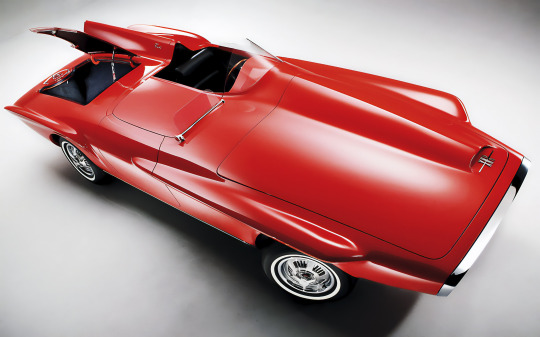

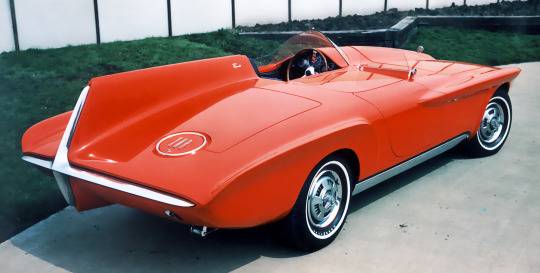
Plymouth XNR Concept, 1960. Designed by Virgil M. Exner and built by Carrozzeria Ghia, the XNR made its first public appearance at the New York Auto Show. It used the chassis and Slant-6 engine from the Valiant, both of which were new for the 1960 model year.
#Plymouth#Plymouth XNR#Virgil Exner#concept#design study#1960#straight 6#New York Auto Show#prototype#Valiant#open roof
529 notes
·
View notes
Text
Car Spot: 1955 Chevy Nomad
When wagons were cool. A 55 Chevy Nomad is this week's spot
Another Harley Earl design ahead of its time When a conversation starts about the great US car designers, names that would pop up would be Virgil Exner Sr for his work at Studebaker and Chrysler, Alexander Tremulis who designed the Tucker and Harley Earl for his work at GM, and specifically this week’s spot a 1955 Chevy Nomad I found this past summer and a car and airplane event I was at in…
0 notes
Text
Those Who Love Fine Possessions - Andrew Miles @DriventoWrite
In 1957, then-Senator John Fitzgerald Kennedy won the Pulitzer Prize for his book[1], “Profiles in Courage”, an effort to raise his image in political life. A similar soubriquet could easily apply to this, the seventh overall model of Chrysler’s newly separated luxury division — Imperial. Virgil Exner’s Forward Look certainly causes one to prevaricate, if only due to the time it takes to drink it…
0 notes
Text

1955 Chrysler Falcon Concept
In 1951, Chrysler made a strategic decision to hire Virgil Exner, which ultimately saved the company from financial ruin in the mid-1950s. Exner's innovative designs, known as the 'Forward Look,' not only revolutionized Chrysler's product line but also influenced the entire American automotive industry's shift towards modernity. While General Motors (GM) was successful during this period, Harley Earl, GM's design chief, acknowledged the need to catch up with Chrysler's designs. Ford, on the other hand, made costly mistakes, such as introducing the Edsel and discontinuing the two-seater Thunderbird, which resulted in the company playing catch-up. The other automakers, including Hudson, Nash, Studebaker, and Packard, failed to impress consumers with their designs, leading to their eventual downfall. The only exception was the Avanti, which was a well-designed car but ultimately failed in the market. In conclusion, Chrysler's strategic hiring of Virgil Exner and his innovative designs played a significant role in the company's success during the mid-1950s, while other automakers struggled to keep up with the changing times.
#Chrysler Falcon Concept#Chrysler Falcon#Chrysler#concept#falcon#car#cars#mopar#moparperformance#moparnation#moparworld
96 notes
·
View notes
Text
In the wild, a lot of prey animals will disguise themselves from predators. This camouflage is accomplished using an adaptation that scientists refer to as "camouflage." By doing this, it is hoped, predators will just walk on past, and the hidden prey animal can continue its life of eating vegetables and being terrified of loud noises in peace.
Art imitates life, and so the humble automobile often also hides itself from those who would do it harm. Just who is the natural predator of cars? It turns out that, like for so many other inhabitants of Earth, it's us. Many cars don't get a natural death, rotting to nothingness in a cornfield somewhere as Virgil Exner intended, and instead are crashed into other cars (accidentally or deliberately,) or crushed into a fine paste in order to be recycled into washing machines and bicycles.
You might think that this is absurd. I can look out my window right now, you say, and my car is right there, obvious as can be. Maybe you even have a crazy bright paint colour for it, like red, or industrial grey. This is the vehicle's camouflage, and inside it are all the problems and miseries that make a car what it truly is: the source of your inevitable torment.
If you were to extinguish all the problems of a car in one Four Loko-fuelled driveway thrash session, it would simply cease to be, vaporizing into a small dust cloud and leaving behind a coupon good for fifteen percent off a Toyota product. Even a new car (do they still make those?) has a perfect ecosystem of minor faults that will one day torture a would-be mechanic into considering moving into the forest and hunting men for sport.
Finding out the actual fault, its source, and its solution takes a trained eye. Faults are our prey, and they will hide anywhere they can fit: inside a wiring harness, motor winding, slightly pinched coolant hose, or even microcode. If you persist, however, you will get to devour the feeling of having fixed a problem on your car. And then you'll get to drive it, causing more faults to lodge inside the body for protection. It's only natural.
139 notes
·
View notes